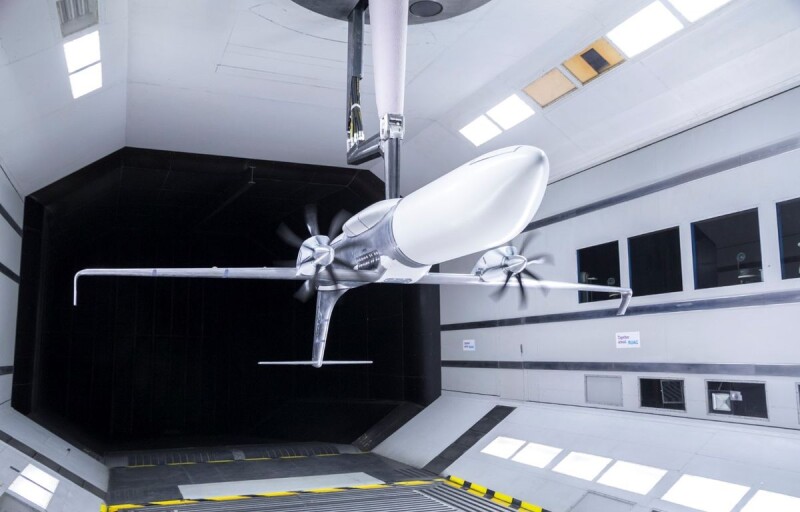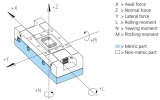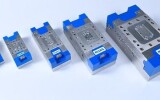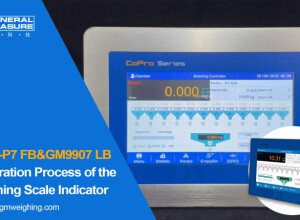HBM - Hottinger Baldwin Messtechnik GmbH (Switzerland) - Experimental tests in a wind tunnel provide the aerodynamics engineer with the necessary data to design and assess the aerodynamic properties of a test object. The tests are performed either with a scaled-down but extremely realistic model of an aircraft, building, and vehicle or with a full-size object (athletes and cars/vehicles).
RUAG Schweiz in Emmen operates several wind tunnels in which measurement data are recorded, processed and evaluated with the highest precision.
Challenge:
Despite high investment and operating costs, aircraft and vehicle manufacturers continue to rely heavily on wind tunnel testing. The complexity and requirements of the tests are increasing. High-quality measurement data - both static and increasingly transient - must be delivered reliably and efficiently. Also, the productivity from installation to delivery of the results is essential.
Solution:
MGCplus amplifier systems were selected and integrated into a compact and mobile overall system. This results in a fast and flexible connection of measuring chains with standardized connection cables, various measuring sensors, as required for aerodynamic tests, and the configuration via an open interface to the wind tunnel software. Further criteria for the solution are efficient calibration with traceability to national standards and long-term delivery reliability by the manufacturer.
Result:
Thanks to the modularity, flexibility, high precision, and excellent long-term stability of the MGCplus/DMP DAQ systems, a wide variety of tests is carried out. Together with the RUAG multi-component balances, a measurement chain is available for determining loads such as lift and drag forces. The chain can be optimally configured to provide the aerodynamics engineer with the necessary data for the improvement/validation of his product.
Wind Tunnel Testing With Realistic Results:
The scope of wind tunnel testing performed at RUAG is very large and the requirements with respect to measurements and data acquisition are thus diverse. In the simplest case, the customer is only interested in observing the test object as it is exposed to wind, for instance, an umbrella. In this case, only wind speed needs to be known.
Generally, tests are more complex and the wind tunnel models are equipped with a number of sensors used to obtain quantitative data for loads and pressures acting on the object. The LOSITA wind tunnel model, built and tested in the frame of the European Clean Sky 2 Initiative, is an example of a complex wind tunnel test with high demands on data acquisition. LOSITA has received funding from the European Union's Horizon 2020 research and innovation program under grant agreements CS-GA-2013-01-LOSITA-620108.
The model is equipped with a RUAG six-component balance to obtain the global forces and moments acting on the aircraft. The aircraft is driven by two powerful wing mounted propeller turbines. The propellers will have a significant effect on the airflow around the wing and must thus be incorporated in the wind tunnel model. The forces acting on the propellers are measured with additional 6-component balances installed in the hub of the propellers (Rotating Shaft Balances). From these global force values, the aerodynamicist extracts information about the performance of the aircraft but also its stability and controllability.
Structural engineers may be more interested to obtain the aerodynamic loads on certain components of the aircraft. Such data is derived from pressure measurements at different locations on the model. For this purpose, the LOSITA model was equipped with more than 700 pressure taps. An alternative or complementary approach is the use of strain gauge component balances designed specifically to measure, for example, the forces on a single control surface.
In addition to these “customer” measurements, several sensors are used to control and monitor the test and the model such as accelerometers, rpm-, position- and temperature sensors. The differing goals of each wind tunnel test campaign and the resulting diversity of deployed sensors put very high demands on the flexibility of the data acquisition system. The instrumentation and specifically the multicomponent balances need to fulfill very stringent customer requirements when it comes to accuracy and repeatability.
The DMP/MGCplus systems have been used in RUAG's wind tunnels and for the calibration of its wind tunnel balances for more than 10 years. The originally specified requirements regarding accuracy, resolution, repeatability and availability are still met or exceeded today. The periodic calibrations also show excellent long-term stability. The measurement results obtained have served and continue to serve our customers as confirmation or as valuable input for the further improvement of their product.
Picture 1 Caption:
The LOSITA wind tunnel model at RUAG.
Picture 2 Caption:
Strain gauge-based wind tunnel balance from RUAG.
Picture 3 Caption:
RUAG’s 7xx balance series.













































Interested? Submit your enquiry using the form below:
Only available for registered users. Sign In to your account or register here.